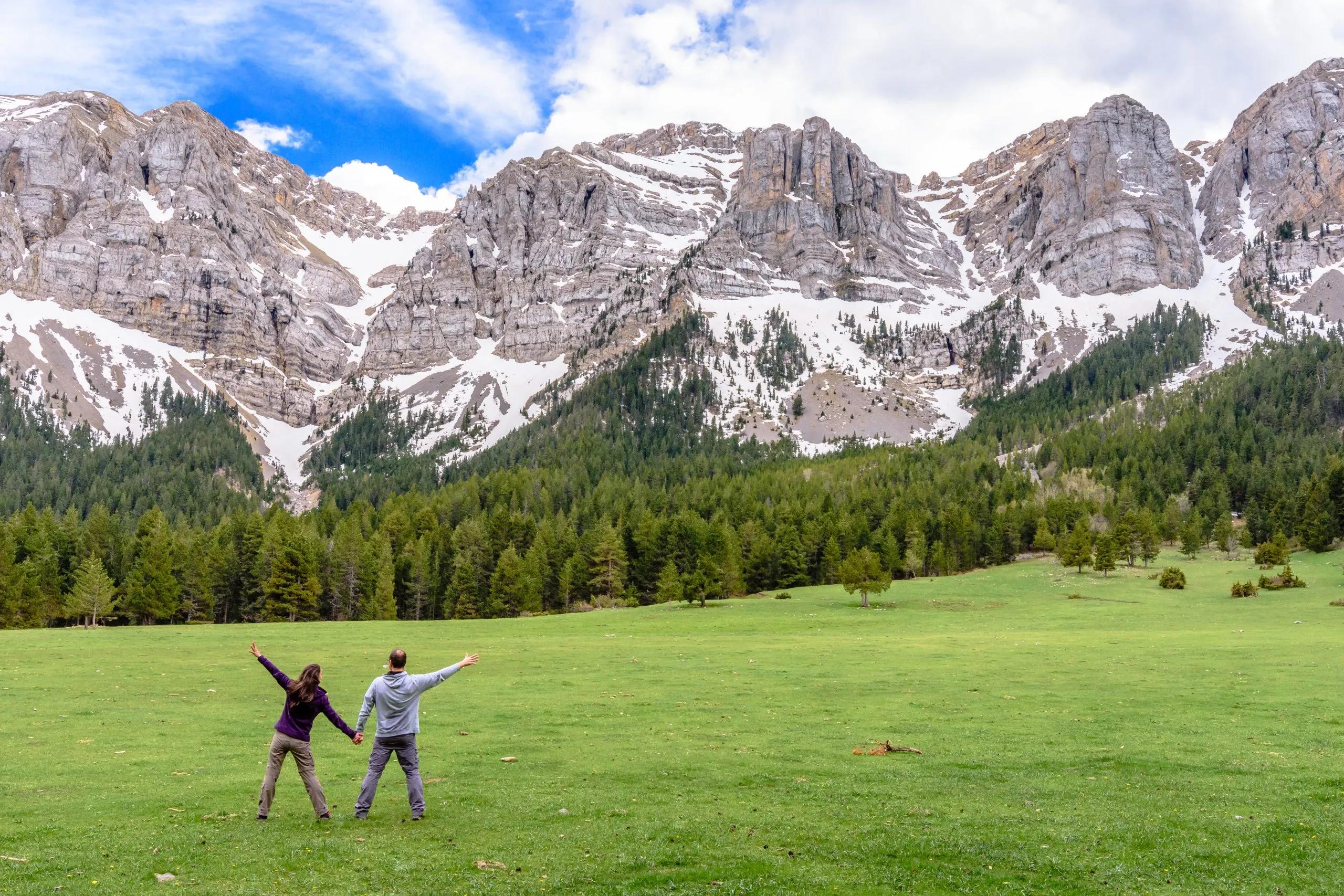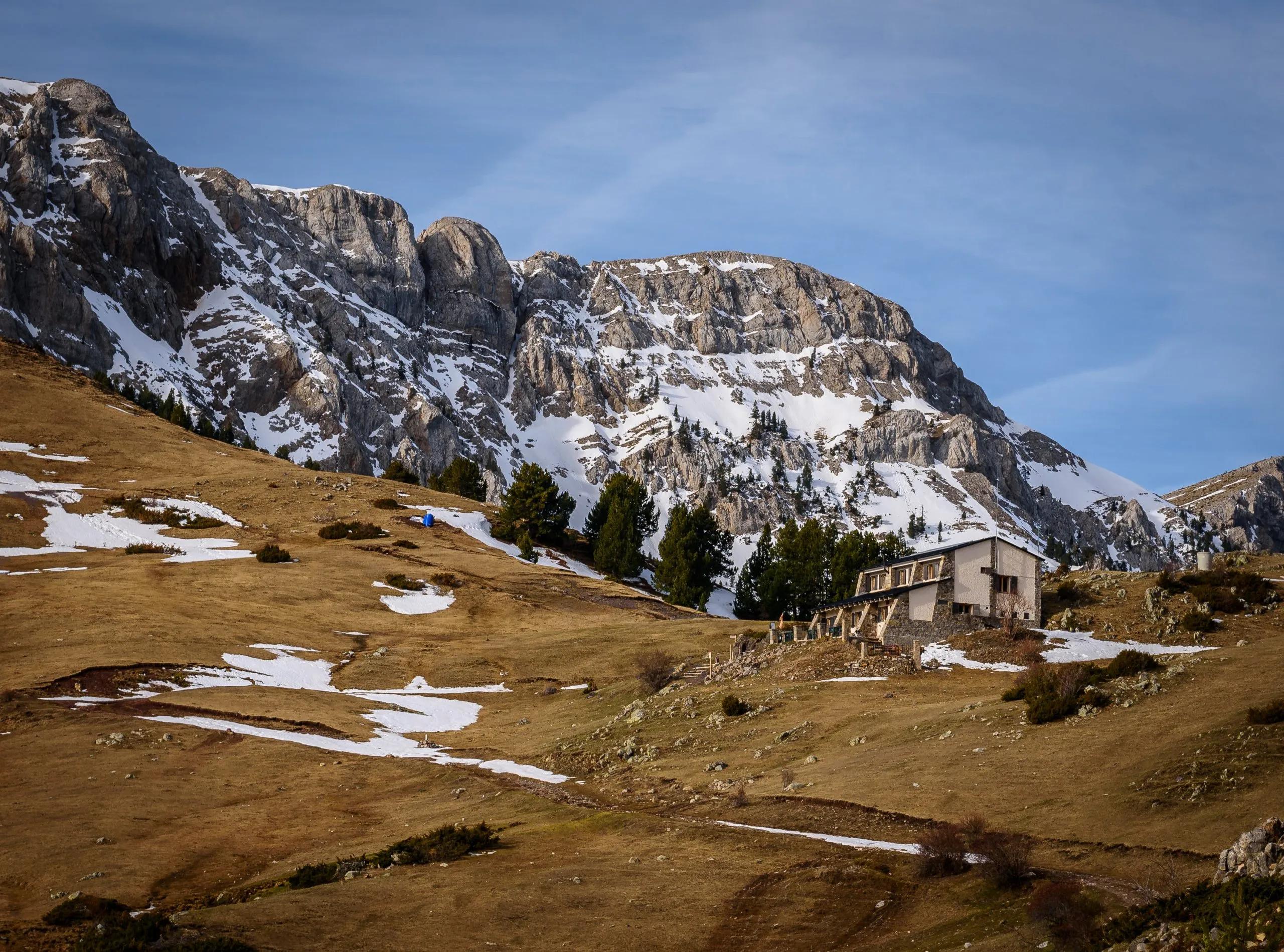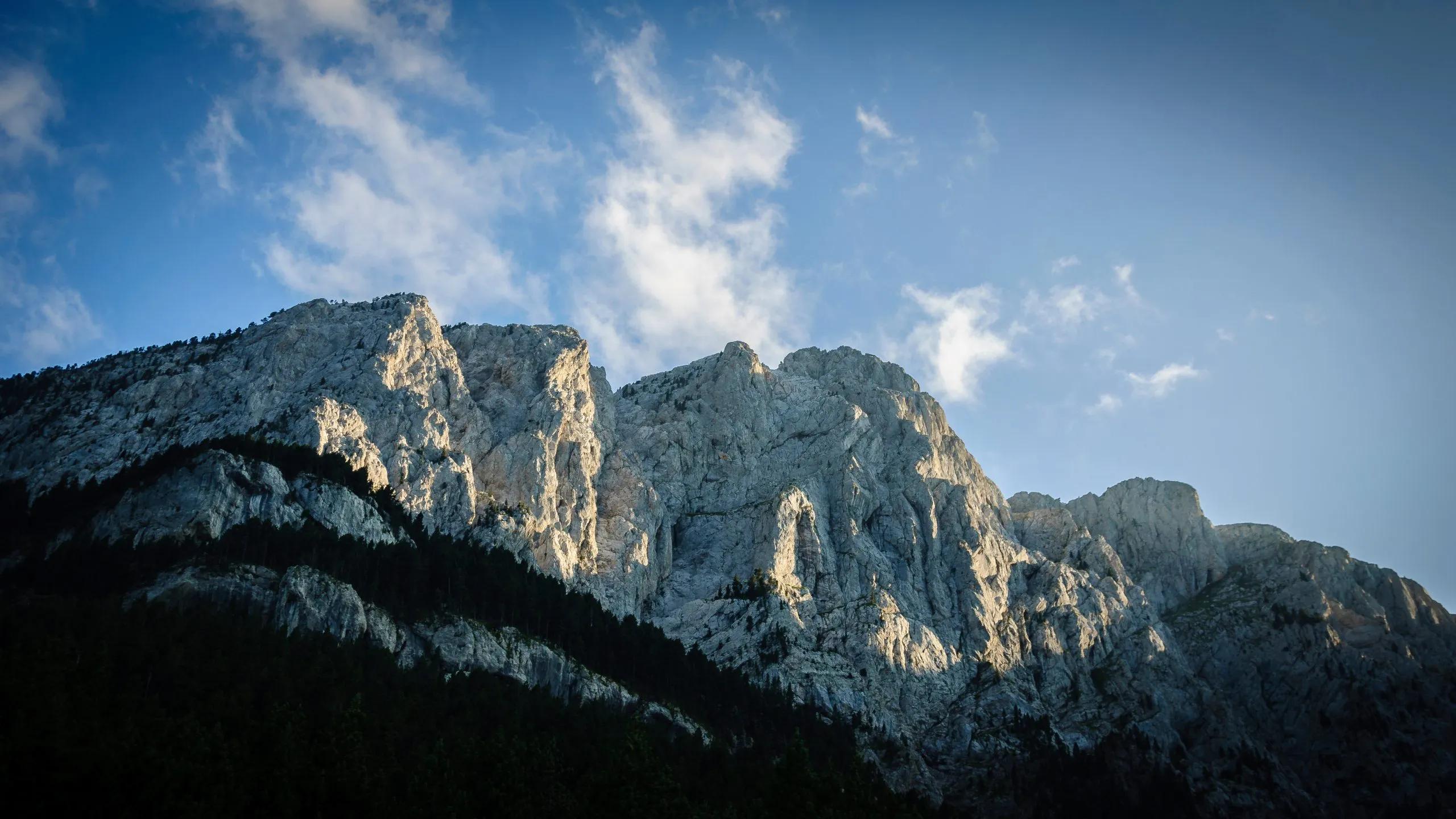7.5 km and 930 m of elevation gain









Cavalls del Vent Hike
8 days / 7 nights
|
Starting point
La Molina
Finish point
La Molina
Season
From July to September
Technical level
3/5
Fitness level
3/5
Tour type
Hut-to-Hut
Starting point
La Molina
Finish point
La Molina
Season
From July to September
Technical level
3/5
Fitness level
3/5
Tour type
Hut-to-Hut
Highlights
- Experience the varied landscapes of the Cadí-Moixeró Natural Park, from Mediterranean woods to alpine meadows
- Trek through a circuit of eight charming mountain huts, each with its unique character and history
- Enjoy the culinary delights of mountain cuisine, from hearty soups to traditional rice dishes
- Experience breathtaking views from Niu de l’Àliga, the highest wardened hut in the Pyrenees
- Join with the historic Route of the Cathars, a long-distance path rich in cultural heritage
- Discover the diverse wildlife in the park, from golden eagles and black woodpeckers
Itinerary of the trip
FREE ITINERARY
Get Your Travel Itinerary
Loved the itinerary? Enter your email below, and we'll send a copy straight to your inbox.
What’s included in the price?
Self-guided
NOT INCLUDED
OPTIONAL EXTRAS
Guided
NOT INCLUDED
OPTIONAL EXTRAS
What to bring to the tour
- Hiking shoes/boots
- 25 to 45-liter backpack
- Base layer
- Sports T-shirts
- Hiking shorts
- Hiking water-repellent pants
- Waterproof jacket
- Midlayer
- Sports socks and underwear
- Leisurewear for evenings
- Down jacket
- Gloves
- Shade hat/cap
- Warm headwear
- Sunscreen
- Sunglasses
- Headlamp
- Hiking poles
- ID card or passport
- Snacks
- Cash
- Water bottles or hydration pack
- Sleeping liner
- Toiletries
- Toilet paper
- Small first aid kit
Weave through the stunning landscapes of Catalonia's Cavalls del Vent or 'Horses of the Wind.' This famed circuit links eight rustic mountain huts within the breathtaking Cadí-Moixeró Natural Park, sprawling across the Berguedà and Cerdanya counties.
Encompassing over 80 kilometers of trails, you'll traverse a rich tapestry of Mediterranean forests, expansive meadows, and rugged mountains, each offering a unique vista and challenge.
You'll be captivated by the shifting scenery, from the serene Bastareny River valley to the lofty heights of Niu de l’Àliga. Along the way, the path is dotted with picturesque huts, each a welcoming haven offering basic amenities and the simple pleasures of mountain cuisine.
The Cavalls del Vent is a moderately challenging trek, suitable for a wide range of hikers. While the route isn't technically demanding, it includes sections with significant elevation changes and longer distances.
As the journey is circular, it offers flexibility to tailor the experience to your fitness level. However, do note that luggage transfer is not an option on this self-sufficient adventure.
Our commitment to you extends beyond the trail. We ensure a seamless experience by booking all huts along your journey, providing round-the-clock support, GPS navigation, and an in-depth digital guidebook about Cavalls del Vent. This comprehensive preparation allows you to immerse fully in the adventure, with the comfort of knowing every detail is taken care of.
Frequently Asked Questions
Ratings & Reviews

5.0 average rating

I had an absolutely wonderful experience with Hut to Hut Hiking. They were exceedingly responsive, patiently answering my many emails' worth of questions about itineraries, schedules, logistics, and the like. They helped to create an absolutely perfect trek according to the limited time I had and they provided helpful information for me to organize travel to and from the start and end points. Hut to Hut's communication is professional, their website is useful, and the itinerary and GPS tracking information they sent me once I paid/booked was flawless. The trails were easy to follow, Ride with GPS worked perfectly, and I was so grateful to have relied on a company to facilitate my route in a country where I was unfamiliar. I'm used to planning my own routes, but Hut to Hut Hiking's expertise and insight made the entire experience infinitely more pleasant.


We had a lovely hike today with our guide Klemen. He personalized the tour on our needs and interests, so that we saw places we wouldn't without his experience. The hike was a little bit slippery after the rain from the last days and it went a lot upwards, but it was totally worth it! Thanks again :)


Carros de Foc was an unforgettable experience. The loop took me through stunning high-altitude landscapes with glacial lakes, rocky ridges, and peaceful valleys. The huts were perfectly located and offered a great place to unwind after a full day of hiking. Anja’s recommendations on pacing and what to pack were spot-on, making the entire experience seamless. This trek is ideal for those who want to fully immerse themselves in the Pyrenees’ natural beauty.
I had an absolutely wonderful experience with Hut to Hut Hiking. They were exceedingly responsive, patiently answering my many emails' worth of questions about itineraries, schedules, logistics, and the like. They helped to create an absolutely perfect trek according to the limited time I had and they provided helpful information for me to organize travel to and from the start and end points. Hut to Hut's communication is professional, their website is useful, and the itinerary and GPS tracking information they sent me once I paid/booked was flawless. The trails were easy to follow, Ride with GPS worked perfectly, and I was so grateful to have relied on a company to facilitate my route in a country where I was unfamiliar. I'm used to planning my own routes, but Hut to Hut Hiking's expertise and insight made the entire experience infinitely more pleasant.


We had a lovely hike today with our guide Klemen. He personalized the tour on our needs and interests, so that we saw places we wouldn't without his experience. The hike was a little bit slippery after the rain from the last days and it went a lot upwards, but it was totally worth it! Thanks again :)


Carros de Foc was an unforgettable experience. The loop took me through stunning high-altitude landscapes with glacial lakes, rocky ridges, and peaceful valleys. The huts were perfectly located and offered a great place to unwind after a full day of hiking. Anja’s recommendations on pacing and what to pack were spot-on, making the entire experience seamless. This trek is ideal for those who want to fully immerse themselves in the Pyrenees’ natural beauty.
All available guidance options
Private Guided Solo
Experience the great outdoors on a private guided tour tailored just for you...
Private Guided Group
Get together a group of your hiking buddies and leave the rest to us! All you have to do is sit back, relax and enjoy a tour built around your group’s preferences. With an experienced guide accompanying you every step of the way, you’ll get the most out of your hike without having to stress about the details.
Self-guided
Are you looking for a good adventure and limitless flexibility? Then you should try out a self-guided tour, perfect for independent explorers who want to set their own pace. Without the need to stick to a group schedule, you’re free to linger at scenic viewpoints while the logistics are taken care of in advance.

HASSLE-FREE
We handle itineraries, accommodations, and anything else you prefer not to deal with, so you can enjoy a carefree hike.

BOOK WITH CONFIDENCE
We are a financially protected company, fully bonded and insured, keeping your money safe and allowing you to travel with confidence.

TRIED & TESTED ADVENTURES
Only the best hut to hut hikes in Europe, cherry-picked by our local team with an in-depth knowledge of the region.

UNBEATABLE SUPPORT
Our 24/7 customer support is where we show our passion, bringing you a better experience by making your well-being our number one priority.
















































